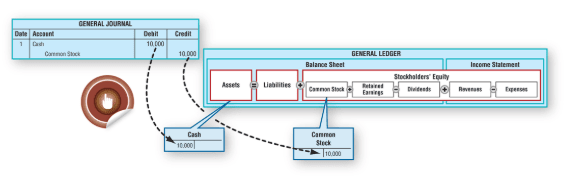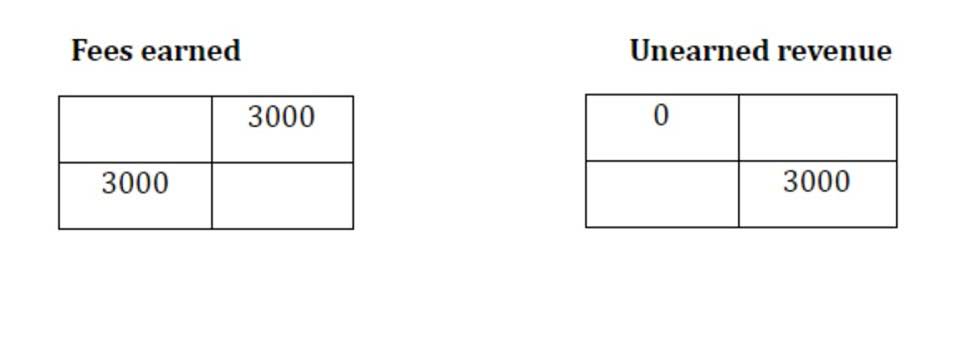
These translation adjustments are recorded in other comprehensive income, providing a more accurate reflection of the company’s financial position. ‘Recycling’ is the process whereby items previously recognised in other comprehensive income are subsequently reclassified to QuickBooks profit or loss.as an accounting adjustment but referred to in IAS 1 as reclassification adjustments.. In other words gains or losses are first recognised in the OCI and then in a later accounting period also recognised in the SOPL. In this way the gain or loss is reported in the total comprehensive income of two accounting periods and in colloquial terms is said to be ‘recycled’ as it is recognised twice. At present it is down to individual IFRS standards to direct when gains and losses are to be reclassified from OCI to SOPL as a reclassification adjustment. So rather than have a clear principles based approach on reclassification what we currently have is a rules based approach to this issue.
Deep Dive into Its Relevance for Businesses

Foreign currency translation adjustments can also impact a company’s financial position. If a company does business in multiple countries, it will need to translate its financial statements into the reporting currency. Changes in exchange rates can result in gains or losses that are recognized in comprehensive income.
Hello and welcome to Viewpoint

Since the other comprehensive income is shown after statement of comprehensive income tax, the notes to the financial statements must show the beforetax amounts, the tax expense/benefit and the aftertax amounts of each component of other comprehensive income. Unrealized gains and losses can have a significant impact on a company’s financial position. For example, if a company holds investments that have increased in value but have not yet been sold, those gains would be considered unrealized. If those investments were to decrease in value before they were sold, the company would need to recognize a loss on its income statement.

Why is comprehensive income important for businesses?
- At March 31, 199X, the market price of stock A was $1,080 and that of the other stocks was $15,500.
- A company’s income statement details revenues and expenses, including taxes and interest.
- Unlike net income, which only accounts for revenues and expenses from regular operations, comprehensive income includes all sources of value change.
- The importance of recognizing comprehensive income cannot be overstated, as it provides a more complete picture of a company’s financial performance than traditional income statements alone.
- Exhibit 5, page 52, illustrates how a company can display comprehensive income in the statement of changes in equity.
- Financial statements, including those showing comprehensive income, only portray activity from a certain period or specific time.
The FASB discourages companies from using this method because it tends to hide comprehensive income in the middle of the AI in Accounting statement. During the year, the ABC Co. adopted FASB Statement no. 130, Reporting Comprehensive Income. Statement no. 130 requires the reporting of comprehensive income in addition to net income from operations. Comprehensive income is a more inclusive financial reporting methodology that includes disclosure of certain financial information that historically has not been recognized in the calculation of net income.
- To guarantee that their financial statements meet the criteria of both IFRS and US GAAP, companies who operate under both standards may need to make modifications.
- One of the primary components is unrealized gains and losses on available-for-sale securities.
- Statement no. 130 does not affect the measurement of the three items included in other comprehensive income; it affects only where the information is presented.
- Changes in the funded status of these plans, due to factors like actuarial gains or losses and changes in the fair value of plan assets, are included.
- Examples of transitory gains and losses are those that arise on the remeasurement of defined benefit pension funds and revaluation surpluses on PPE.

From a company’s point of view, comprehensive income is a valuable tool for assessing the effects of foreign currency fluctuations and changes in market value on their financial statements. It helps them make more informed decisions about how to allocate their resources. Understanding the components of comprehensive income is essential for shareholders and investors to gain a broader perspective on a company’s financial performance. By analyzing comprehensive income, investors can better understand the long-term financial health of a company and make more informed investment decisions. The Statement of Financial Accounting Standards No. 220 makes comprehensive income key for checking a company’s financial performance.
- Understanding comprehensive income is essential for investors, analysts, and other stakeholders who seek a deeper insight into a company’s overall financial health.
- This statement includes both profit or loss and other comprehensive income (OCI), ensuring that all changes in equity not resulting from transactions with owners are transparently reported.
- The second decision is whether to show the components of other comprehensive income net of reclassification adjustments.
- It provides a seamless narrative of equity changes, enhancing the overall coherence of financial reporting.
- It may be difficult to deal with OCI on a conceptual level since the International Accounting Standards Board (the Board) is finding it difficult to find a sound conceptual basis.

This statement is called the statement of comprehensive income under IFRS, and the statement of comprehensive income or statement of other comprehensive income under US GAAP. The FASB followed the all-inclusive concept, except when changes in certain assets and liabilities were not reported in the income statement but, rather, were included as a separate component of equity. Comprehensive income describes all changes in shareholders’ equity except those resulting from investments by owners and distributions to owners. ‘Comprehensive income’ and ‘other comprehensive income’ are two components of the income statement that can have a material effect on the profitability of a company.